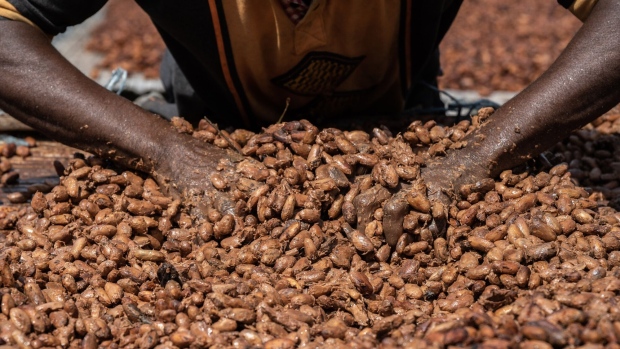Mar 29, 2023
Top Cocoa Grower Says Mid-Crop Harvest Will Bridge Supply Gap
, Bloomberg News

(Bloomberg) -- Ivory Coast’s cocoa regulator extended the window for exporters to buy their allocated volume of beans into the mid-crop harvest to ease concerns over a shortage that pushed prices for the commodity to a three-year high.
Le Conseil Cafe Cacao, which sells forward contracts for the country’s main crop harvest, will allow shippers that couldn’t secure enough beans to purchase from the year’s secondary harvest, CCC Director Yves Kone said in an interview. Cocoa from the so-called mid-crop season, which starts Saturday, is usually lower quality and typically sold to local grinders.
It’s the latest move to ease supply concerns after CCC stopped some multinational traders from buying more beans last month after they reached the purchase limits of their current contracts. The restriction, which remains in place, was meant to leave enough crop for smaller shippers to meet their own contract commitments.
Allowing access to the mid-crop is “a standard measure,” Kone said. “Ivory Coast has enough beans for all contracts to be covered.”
Ivory Coast supplies are down this season, with total bean arrivals at 1.78 million tons compared with estimates of about 1.85 million tons a year ago. That’s helped push cocoa futures in New York to more than $2,900 a ton this week for the first time since 2020.
Prices fell slightly in New York on Wednesday, with futures for delivery in May dropping 0.3% to $2,892. The contracts are still up 11% this year.
Unfavorable weather has lowered output across West Africa, Kone said, without giving estimates for the current shortage or production levels. Speculation has also contributed to the price move, he said, with middlemen hoarding beans in the hope of selling them for a higher price.
The gap between the amount covered by exporters’ contracts and the amount purchased so far stands at about 100,000 tons, according to two people familiar with the matter. The mid-crop, which is typically about 500,000 tons, would likely cover such a shortfall. But some buyers are concerned that the secondary harvest tends to have more low-quality beans.
--With assistance from Mumbi Gitau.
©2023 Bloomberg L.P.






